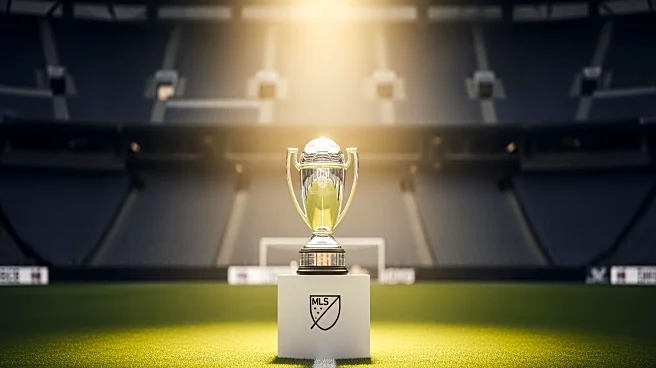What's Happening?
Major League Soccer (MLS) has seen several teams establish themselves as dynasties over its 30-year history. Notable teams include D.C. United, Los Angeles Galaxy, and Seattle Sounders, each achieving multiple championships and setting records. These
teams have been characterized by strong leadership, star players, and consistent performance. The article highlights the evolution of MLS, showcasing the rise and fall of various teams and their contributions to the league's growth.
Why It's Important?
The history of MLS dynasties is crucial for understanding the league's development and its impact on American soccer. These successful teams have helped elevate the sport's popularity in the U.S., attracting fans and fostering a competitive environment. The achievements of these teams serve as benchmarks for current and future franchises, inspiring them to strive for excellence. The legacy of these dynasties contributes to the cultural and economic growth of soccer in the U.S., influencing youth participation and professional opportunities.
What's Next?
As MLS continues to expand, new teams have the opportunity to establish themselves as dynasties. The league's growth may lead to increased investment, talent acquisition, and international recognition. Future developments could include enhanced infrastructure, strategic partnerships, and innovations in fan engagement. The upcoming World Cup presents an opportunity for MLS to showcase its progress and attract global attention.
Beyond the Headlines
The success of MLS dynasties reflects broader trends in sports management, including the importance of strategic planning, community engagement, and player development. These elements are essential for building sustainable franchises and fostering long-term success. The narrative of dynasties also highlights the role of sports in shaping cultural identities and promoting social cohesion.














